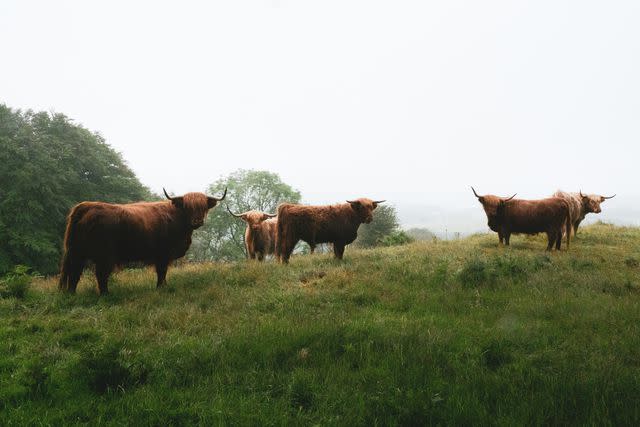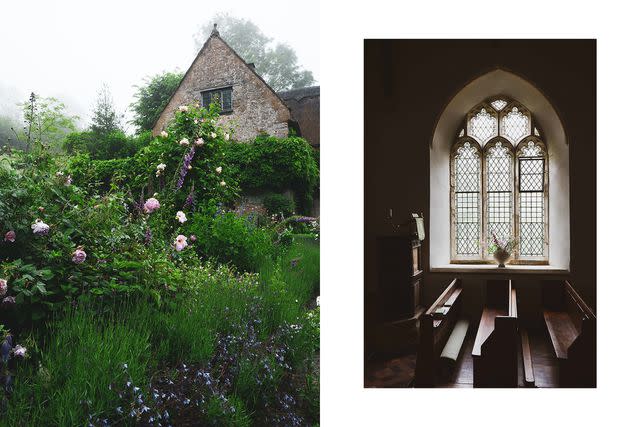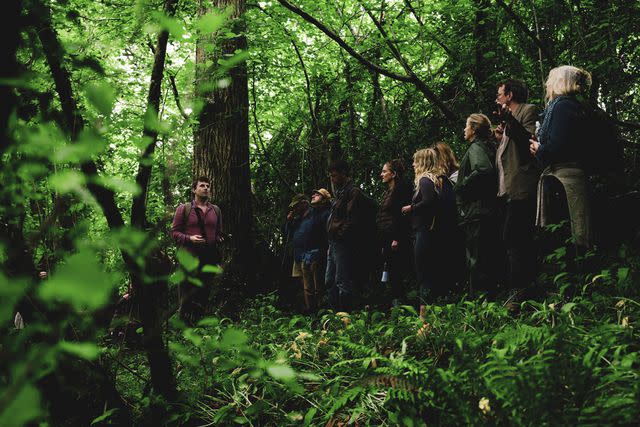This Ancient Pilgrimage Route in Rural England Passes Charming Villages, Wild Natural Landscapes, and a 14th-Century Pub
- Oops!Something went wrong.Please try again later.
- Oops!Something went wrong.Please try again later.
In Dorset, a nonprofit is spearheading the revival of multi-day walks to reconnect with nature and and visit historic sites.
In the chill of a 12th-century English church, a 30-something with a liquid baritone and a Harry Potter-ish gaze sang a medieval lament. We gathered tentatively around him, 23 near-strangers who had come together over the summer solstice to trace an ancient pilgrimage trail through Marshwood Vale, a valley in West Dorset.
The baritone, Guy Hayward, is head of the British Pilgrimage Trust, a nonprofit that is spearheading a secular revival of these traditional journeys. No longer an exercise in deprivation, the pilgrimage that had brought us to Stoke Abbott church was about communing with nature, and with the heritage of the U.K.’s most sanctified places. The idea remains relevant, Hayward told us, “because it taps into the universal search for direction, identity, and holistic meaning.”

Sophy Roberts
Highland cattle at Marshwood Vale.Stoke Abbott, one of Dorset’s prettiest villages, marked the start of our route; from there we would trace the river Char for around 10 miles as it wound through Marshwood Vale before joining the English Channel in the village of Charmouth, on Dorset’s famously scenic Jurassic Coast.
After the burst of singing, some of us filled our water bottles and enjoyed a ceremonial head-dunking in the carved fountainhead outside. Hayward encouraged us to drop a pebble into the water while setting an intention for the next few days, a way of helping to remove the stumbling blocks in our lives. “Does losing my car keys daily count?” inquired one joker in the pack.
On that warm midsummer morning, Stoke Abbott was all biscuit-colored loveliness in thatch and sandstone, with dog roses panting out of the hedges, mayflies shimmering, and bees rummaging in the foxgloves. Just opposite the church is Manor Farm, where Hayward led us through the bucolic garden and into a deep wooded glade. The temperature dropped and we climbed a rutted, muddy path to the summit of Lewesdon Hill, flushing out screeching pheasants along the way.
There is magic in high places: at over 900 feet, Lewesdon Hill is the highest point in Dorset. A circling buzzard described a halo over the Wessex Ridgeway, an ancient road that crossed our path. Around 6,000 years old, the Ridgeway intersects with several ley lines, imagined channels of energy connecting the West Country’s Iron Age hill forts, Lambert’s Castle and Pilsdon Pen among them.

Sophy Roberts
From left: Manor Farm, in the Dorset village of Stoke Abbott; Stoke Abbott's 12th-century church.Beneath beech trees that held up the sky like cathedral buttresses, we gazed out on the landscape that inspired, and was in turn celebrated by, a roll call of literary giants: William Wordsworth, Samuel Taylor Coleridge, Thomas Hardy, and a later adoptive “native,” Paul Theroux. The co-leader of our pilgrimage, Dorset-based author Jason Goodwin, recited the 18th-century poet William Crowe’s “Lewesdon Hill,” which conjured “spongy turf,” “the stir of yonder fields,” and the “wide-branching oak.”
Through this gentle pastoral we followed the weave of old wayfarers’ routes that once led to markets and sites of worship: paths made by smugglers and pilgrims, sunken paths known as holloways, and cattle drovers’ paths.
The going was slow. But the pace was conducive to getting to know one another, and we quickly discovered that walking and talking was a kind of therapy in itself. We paused often: at the remarkable Pilsdon Community, a religious commune designed as a refuge for people in crisis inspired by Little Gidding, the 17th-century Anglican community memorialized in T. S. Eliot’s Four Quartets; or to stretch out in daisy-threaded meadows, listening to our leaders recite smuggler’s songs, sea shanties, folk ditties, and forgotten hymns.

Sophy Roberts
Pilgrims pause along the route to hear a song.Five miles from the coast, we reached the portals of the Shave Cross Inn, a 14th-century pub. We were footsore, parched, and glad of the offer of a drink from pub owner Tom Littledyke, who directed our rowdy-looking party to the corner where the kegs of ale are kept.
Before the Reformation, when journeying on foot was England’s most popular expression of spirituality, monks would come to the Shave Cross Inn to have their heads shorn in a gesture of devotion to Saint Wite. This ninth-century hermit lit fires on Golden Cap, a cliff overlooking the English Channel, to warn of Viking invasions. Her bones lie in a stone shrine in the Cathedral of the Vale, in the nearby village of Whitchurch Canonicorum; miraculously, they survived the Reformation, when Catholic-leaning saint worship became a crime that could be punishable by death. According to legend, pilgrims would have covered the last two and a half miles from the inn to her shrine on their knees.
Arriving at the church, we lit candles and raised them to the three oval openings of Saint Wite’s shrine, into which pilgrims once placed votives for the sick, or inserted their own diseased limbs. A few paper prayers slipped from crannies in the wall. I stuck my tennis elbow into the aperture. The candle flickered, the dust motes danced, one of our party wept, and even I was moved, my habitual skepticism for once stilled by the palpable tranquility of the place.
I realized that the ritual of a pilgrimage, the sense of continuum it offers, was something I didn’t know I needed until it took me by surprise in the calm of a 13th-century cathedral.
A version of this story first appeared in the June 2023 issue of Travel + Leisure under the headline "Pilgrim’s Progress."
For more Travel & Leisure news, make sure to sign up for our newsletter!
Read the original article on Travel & Leisure.

